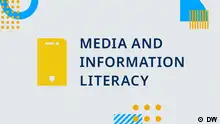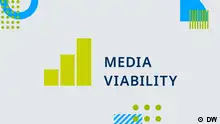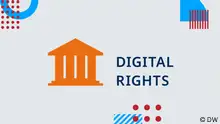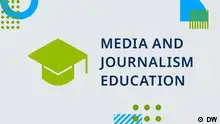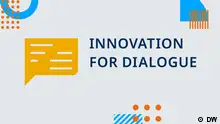Introduction
What is Media Viability?
Media Viability is the ability of media outlets and media landscapes to produce fact-based, quality journalism in a sustainable way.
Media Viability is the ability of media outlets and media landscapes to produce fact-based, quality journalism in a sustainable way. This not only applies to individual media organizations but to networks and a country's overall situation. It also entails much more than an outlet's financial resources and includes the assessment of an audience's engagement, the development of measures to counter political restrictions, the use of technological advances and networks, and the development of suitable editorial strategies. Media Viability looks at how media development can contribute to sustainable high-quality journalism.
Given the ongoing digital transformation and changing user habits, media outlets worldwide often struggle to survive financially and at the same time produce fact-based news for their audiences. Paying journalists a living wage and investing in in-depth reporting can be formidable, especially for outlets that can barely afford the rent or pay electricity bills. Their challenge, then, is to become sufficiently viable and resilient, even in times of crisis.
The struggle to survive
This can be especially hard in an age of digital transformation that has been sweeping through the media industry with a creative but at times destructive effect: digital communication has opened the media landscape to new players and possibilities but has also put an end to the media’s traditional business model.
The last few years have also shown how vulnerable media outlets can be to sudden shocks and disruptions. Most have struggled regardless of their location, with some affected by violent conflicts, others by the coronavirus pandemic, natural disasters, inflationary spirals, economic downturns, or a combination. These are additional threats to media viability, as are authoritarian political regimes, eroding public trust, and lacking regulation of digital platforms.
As a result, commercial and community-based public interest media have struggled to develop viable business models and access outside expertise. Audiences hesitate to pay for content, and legal frameworks favor a few digital players like the dominating social media platforms. Editorial independence and media environments are under enormous pressure, with no consensus on how to overcome the challenges, or a common language to describe them.
Media Viability and freedom of expression go hand in hand
A diverse and viable media ecosystem is crucial for freedom of expression and access to information. If critical independent voices become silent, however, the media’s core mission becomes impossible: to provide the public with relevant and reliable information, watch over the powerful and hold them to account, help minorities to make their voices heard, and accurately report on developments affecting society.
Players aiming to put restrictions on free media and manipulate the public debate often focus on the imbalances or weaknesses within media systems and use financial means to set their agendas. This makes viable public interest media crucial for the protection of freedom of expression and democratic values.
DW Akademie’s approach to Media Viability
Media Viability is often interchanged with terms like "media sustainability", "financial sustainability", "business viability", or "economic sustainability" of the media. However, they do not have a common strategy, and most approaches focus on business plans and other monetary aspects.
DW Akademie uses a comprehensive approach to Media Viability, taking into account the larger picture and the political and economic conditions in which the media operate. The management expertise within individual media outlets is also a factor: strategic thinking, flexibility, and a business model that considers all areas of the organization, such as audience engagement, networks, and the capacity to produce quality, ethical journalism.
In addition, media organizations, experts, and associations need to know about advocacy and how to stand up for their rights as well as engage in dialogue with policymakers on issues such as platform regulations. It is also important for media outlets to understand how digital platforms function and how to use them to their advantage to stay viable.
Ideally, media operate within an ecosystem that fosters public interest journalism and gives citizens access to relevant and trustworthy information. This requires media organizations to have the necessary resources – money, time, and expertise – to produce balanced and accurate news and information that serves society.
DW Akademie therefore strengthens:
- the participation of Media Viability experts in policy debates that aim to improve legal frameworks and political conditions that foster an independent and viable media ecosystem;
- a comprehensive Media Viability approach among media professionals and media organizations to increase their resilience in times of crisis;
- media professionals' and media organizations' access to consulting, capacity building, and specific resources that help develop viable business models for public interest media;
- the coordination of Media Viability experts and media development organizations that aim to bring more clarity around the issue, promote a shared understanding of concepts related to Media Viability, coordinate and collaborate more effectively, and achieve a greater impact.
DW recommends
- Date 14.04.2023
- Feedback: Send us your feedback.
- Print Print this page
- Permalink https://p.dw.com/p/4Q28x
- Date 14.04.2023
- Send us your feedback.
- Print Print this page
- Permalink https://p.dw.com/p/4Q28x

